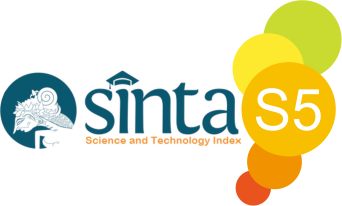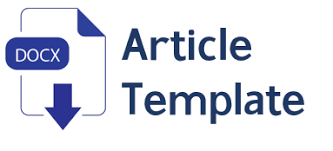Kinerja Sektor Publik Pada Masa Pandemi Covid-19 Berdasarkan Teori Isomorfisma Institusional
DOI:
https://doi.org/10.59086/jam.v1i2.135Keywords:
Balanced scorecard, BKPSDM, covid-19, institutional isomorphism, performanceAbstract
Downloads
References
Ahyaruddin, M., & Akbar, R. (2016). Akuntabilitas dan Kinerja Instansi Pemerintah dalam Perspektif Teori Institusional. Celscitech-UMRI, 1, 39–45.
Akbar, R. (2012). Institutional Isomorphism dalam Akuntabilitas Kinerja Sektor Publik di Indonesia. https://feb.ugm.ac.id/id/penelitian/artikel-dosen/830-institutional-isomorphism-dalam-akuntabilitas-kinerja-sektor-publik-di-indonesia
Alfiani, A., & Mulyati, H. . (2022). Analisis Dampak Pandemi Covid-19 Terhadap Struktur Aktiva Dan Struktur Modal Pada Perusahaan BUMN Yang Terdaftar Di Bursa Efek Indonesia. Mandiri :Jurnal Akuntansi Dan Keuangan, 1(2), 1–8. Retrieved from https://jurnal.risetilmiah.ac.id/index.php/jak/article/view/38
Fahmi, I. (2017). Manajemen Strategis (Teori dan Aplikasi) (M. S. Dr. H. Mukhlis Yunus, S.E. (ed.)).
Fitriyani, D. (2014). Balanced Scorecard: Alternatif Pengukuran Kinerja Organisasi Sektor Publik. Jurnal Cakrawala Akuntansi, 6(1), 16–31.
Fitriyani, Y., & Febrianti, T. (2020). Penilaian Kinerja Laporan Realisasi Anggaran Menggunakan Rasio Efektivitas Dan Rasio Efisiensi Pada Dinas Ketahanan Pangan Dan Perikanan Kabupaten Tanah Laut. Jurnal Riset Akuntansi Politala, 3(2), 105–115. https://jra.politala.ac.id/index.php/JRA/article/view/69%0Ahttps://jra.politala.ac.id/index.php/JRA/article/download/69/35
Instruksi Presiden Republik Indonesia Nomor 4 tahun 2020, (2020).
Kisworo, J., & Shauki, E. R. (2019). Teori Institusional Dalam Penyusunan Dan Publikasi Laporan Tahunan Sektor Publik (Studi Kasus Pada Kementrian Dan Lembaga Negara Di Indonesia). Indonesian Treasury Review, 4(4), 305–321.
Kresna. (2019). Isomorfisma Institusional. https://konsultasiskripsi.com/2019/12/26/isomorfisma-institusional-skripsi-dan-tesis/
Laporan Kinerja Badan Kepegawaian dan Pengembangan Sumber Daya Manusia Kota Mataram. (2019).
Laporan Kinerja Badan Kepegawaian dan Pengembangan Sumber Daya Manusia Kota Mataram. (2020).
Laporan Kinerja Badan Kepegawaian dan Pengembangan Sumber Daya Manusia Kota Mataram. (2021).
Mardiasmo. (2018). Akuntansi Sektor Publik (1st ed.). Andi.
Moeheriono. (2014a). Indokator Kinerja Utama (IKU): Perencanaan, Aplikasi dan Pengembangan (1st ed.).
Moeheriono. (2014b). Pengukuran Kinerja Berbasis Kompetensi (Revisi).
Nasrun, W. N. (2017). Pengukuran Kinerja Sektor Publik dengan Menggunakan Balance Scorecard Pada Badan Pengelolaan Keuangan dan Asset Daerah di Kota Makassar. Universitas Muhammadiyah Makassar.
Peraturan Menteri Pendayagunaan Aparatur Negara dan Reformasi Birokrasi Republik Indonesia Nomor 14 Tahun 2017, Pub. L. No. 14 (2017).
Pertani, E. (2018). Analisis Pengukuran Kinerja Organisasi Sektor Publik Dengan Menggunakan Metode Balanced Scorecard (Studi kasus di Dinas Pemuda, Olahraga, Kebudayaan dan Pariwisata Kabupaten Barito Timur, Kal-Teng). Universitas Sanata Dharma Yogyakarta.
Pribadi, A. (2017). Pengukuran Kinerja Dengan Menggunakan Balanced Scorecard Pada Pure Non Profit Organization Di Desa Tamanagung Kecamatan Cluring Kabupaten Banyuwangi. UIN Maulana Malik Ibrahim Malang.
Rencana Strategis Badan Kepegawaian dan Pengembangan Sumber Daya Manusia Kota Mataram. (n.d.).
Rudianto. (2013). Akuntansi Manajemen: Informasi untuk Pengambilan Keputusan Strategis (S. Saat (Ed.)).
Sagala, S. A., & Siagian, V. (2021). Penilaian Kinerja Menggunakan Metode Balanced Scorecard Pada Perusahaan Sektor Farmasi Sebelum dan Semasa Covid (2019-2020) Yang Terdaftar Di BEI. Perspektif: Jurna Ekonomi & Manajemen, 19(2), 145–149. https://doi.org/https://doi.org/10.31294/jp.v17i2
Sofyani, H., & Akbar, R. (2015). Hubungan Karakteristik Pegawai Pemerintah Daerah Dan Implementasi Sistem Pengukuran Kinerja: Perspektif Isomorfisma Institusional. JAAI, 19(2), 153–173. http://dx.doi.org/10.20885/jaai.vol19.iss2.art6
Solihin, I. (2012). Manajemen Strategik (A. Maulana (Ed.)).
Sugiyono. (2019). Metode Penelitian Kuantitatif, Kualitatif, dan R&D (Sutopo (Ed.); 2nd ed.).
Downloads
Published
How to Cite
Issue
Section
License
Copyright (c) 2022 Sukma Dewi, Ayudia Sokarina, Yusli Mariadi Mariadi

This work is licensed under a Creative Commons Attribution 4.0 International License.
This is an open-access journal. All works are published under the Creative Commons license CC-BY which means that all content is freely available at no charge to the user or his/her Institution. Users are allowed to read, download, copy, write, improve, and create derivative creation even for other lawful purposes, this license permits anyone to, as long as they cite and license the derivative creation under similar terms

This work is licensed under a Creative Commons Attribution 4.0 International License.
Most read articles by the same author(s)
- Siti Hawa, Ayudia Sokarina, Adhitya Bayu Suryantara, Peran Bumdes Maria Maju Untuk Mewujudkan Kemandirian Ekonomi (Studi Kasus Desa Maria Kecamatan Wawo Kabupaten Bima) , Balance : Jurnal Akuntansi dan Manajemen: Vol. 1 No. 2 (2022): Agustus 2022


















